2025 – Tracking and Safety Devices
Brief description
Contemporary rallies are unimaginable without “additional devices” that ensure orientation, navigation, and most importantly, safety. Different rallies have developed various tracking and safety systems, or use different IT and other services and devices.
Our tracking and safety device(s) has been carefully chosen and/or developed to meet specific needs of our “Safety System” and needs of our riders, considering the terrain that dominates the Dinaric Alps and taking into account various scenarios we experienced as well as inputs / reviews of numerous riders during the previous Dinaric Rally‘s editions.
These are the most important criteria that we adhered to during the development of our tracking and safety system(s):
- Safety is no.1 priority. The devices should also serve for timing/scoring purposes.
- The tracking / safety device is an addition to Safety System and must not be mistaken with Safety System itself. Safety system is complex system that contains numerous elements including: Safety Crew (that is experiences, skilled, equiped and prepared and knows the area well), Safety Plan(s), Safety Equipment, Safety Vechicles… which are all necessery for flowless functioning of the system even if technology fails.
- The devices we / riders use must be extremely user-friendly, and riders should intuitively grasp its operation.
- Easy mounting and straightforward maintenance/service are essential features.
- The device must be reliable and sturdy.
- The roadbook holds paramount importance as the “primary navigational device” during Rally Raid, as it is the sole repository of all vital information, including safety-related details. Therefore, during the rally racing, riders must focus their attention on “reading the terrain” and consulting the Roadbook. The tracking/safety device should complement safety aspects and should not be designed in a way that diverts the rider’s attention from the Roadbook. Its purpose is to enhance safety without compromising the crucial role of the Roadbook in guiding the riders through the rally course.
- The device must include the most vital and essential functionalities found in other standard rally devices.
- It should be priced more affordably for amateur riders.
- The device must be customized to suit the unique characteristics of the Dinaric Rally and navigation in the karst terrain of the Dinaric Alps.
Devices we use
Over the years, we have continuously endeavored to enhance our safety system, which also involves certain upgrades to the devices/services encompassed by this system. For timing/scoring and safety (tracking and safety) at the Dinaric Rally (and our other events and rallies), the following devices, by raceadmin.eu will be used:
- Display device with holder.
- Tracking device (GNSS/GSM/GPRS).
- Loud buzzer
Rent of the device(s)
Included in Entry Fee
Safety and Tracking devices
Main characteristics
1. Warning / informing riders, audio-visually (display + buzzer) about:
- Danger 3 (!!!) – The device will warn the riders, audio-visually, each time they are approaching Danger 3 (safety waypoint).
- Speeding – the device will warn the riders, audio-visually, each time they are riding over speed limit
- Start / Finish of Neutralizations – The device notifies riders upon reaching the start and finish (geo-locations) of neutralization zones. IMPORTANT: The device does not show a time counter. It is the sole responsibility of the rider to track the duration of the neutralization and to exit precisely at the correct time.
- Waypoint clearing – riders will be informed, audio-visually each time they get into the radios of any waypoint set on the track
- roadblock (ASSISTANCE”) – Not to be confused with the Overtaking or Accident functions. This function is available as a simple button that riders should press if he / she needs technical help or different assistanc (e.g., by their nav device(s) not working, Display Device is broken, their vehicle is broken, a fallen tree, obstruction on the road) or the safety of themselves, other riders, or any other persons or living beings is compromised.
- Stage or section cancelation – the device will warn the riders, audio-visually, in case stage or specific section of the Stage is canceled. After this messa
- Out of time limit – the device will warn the riders, audio-visually, when / if they reach OTL
2. Two-way communication
Riders can send predefined messages to Race Administration, and vice versa. IMPORTANT: Messages are transmitted via SMS/TCP. In areas with weak signal, SMS delivery may be delayed and will be completed once signal is regained.
3. Live tracking application
Free, public live tracking application will be availible during the rally. Link for a live tracking will be send after all the riders will be registered for the rally.
The Safety and Tracking devices
The safety and alarm system consists of three components:
- Safety console
- GPS antenna
- Safety console bracket
- 110 dB buzzer
Display Device
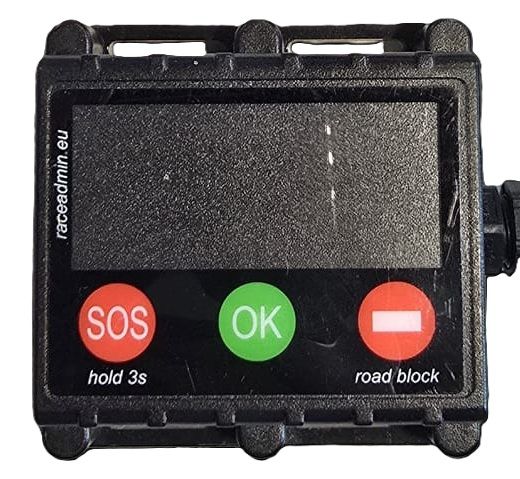
Tracker
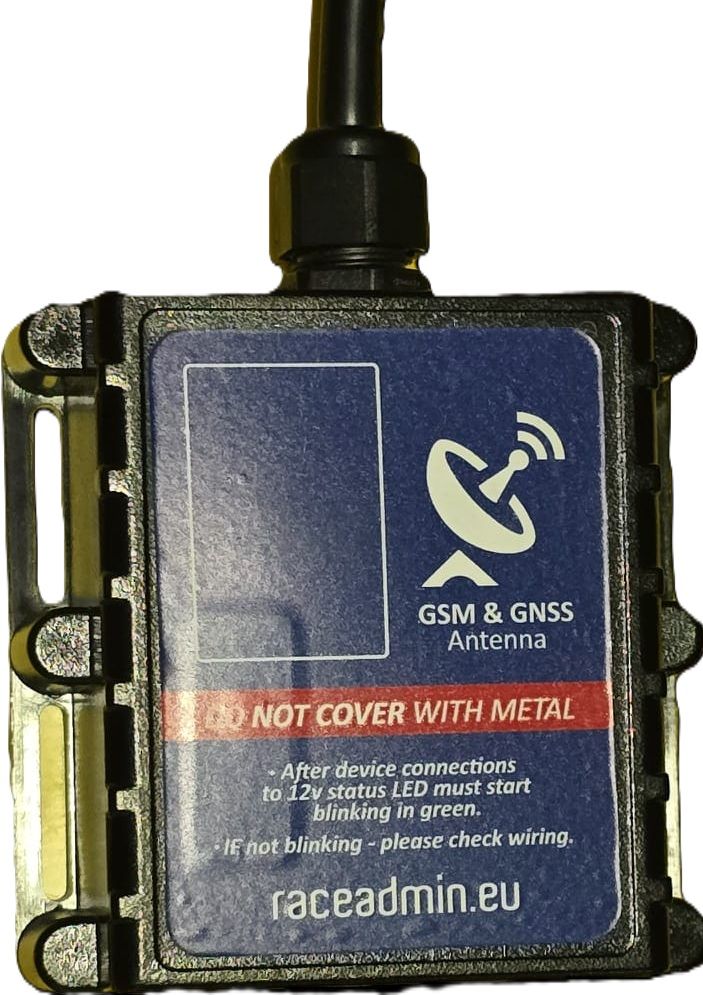
Display Device Holder – Lightweight and durable, it can be securely mounted using only zip ties.
Loud Buzzer
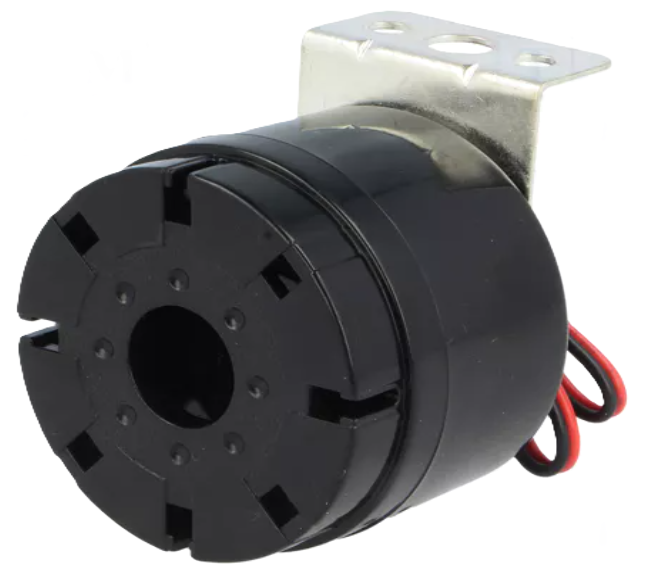
Installation of the devices
Preinstalation:
Please pre-install 12V wiring for connecting the safety console and tracking device:
- 1,5 m of electrical wire with fuse box and 5A fuse installed at the beginning of the circuit.
- Wires must be connected directly to the motorcycle’s + and – battery terminals.
IMPORTANT: Route the wires so they cannot be chafed or damaged. Improper routing may damage the safety console or cause a short circuit, which could result in fire.
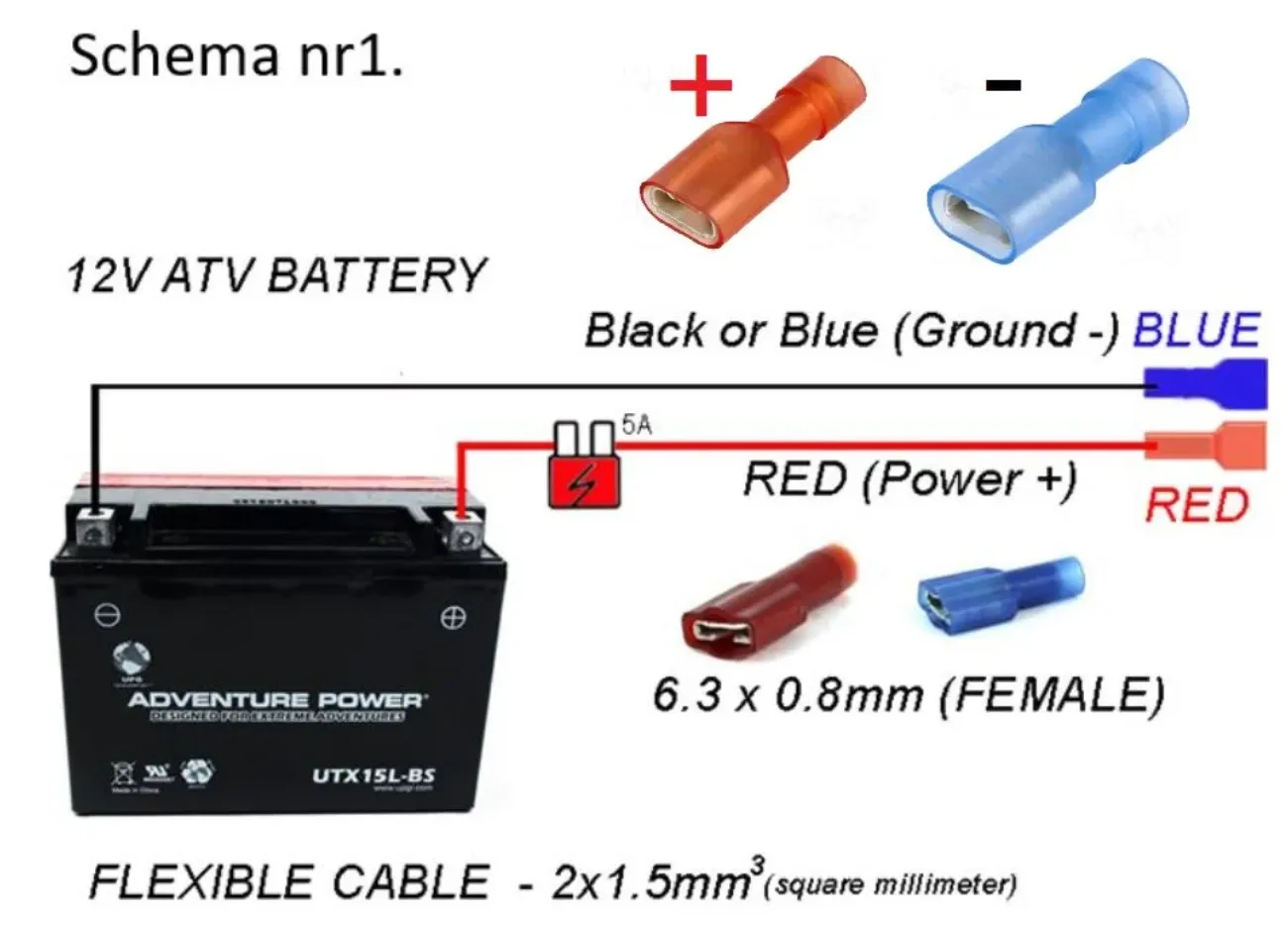
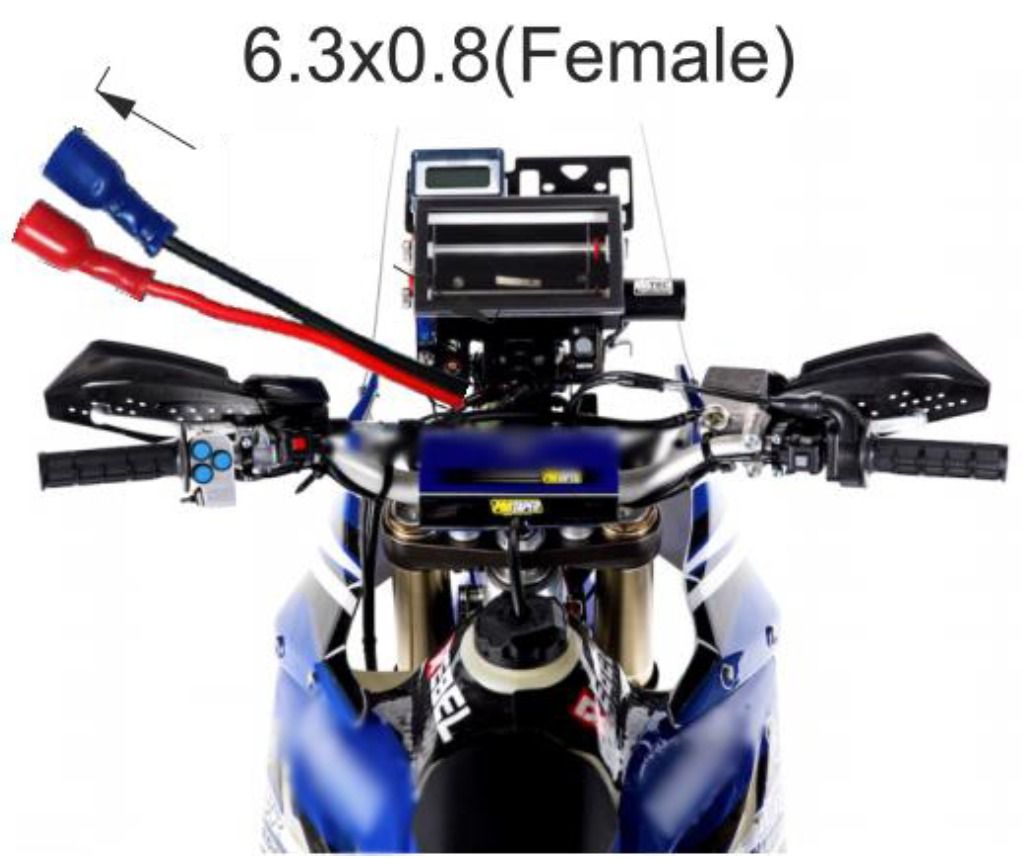
Installation of the Display Device
- Fix the holder with zip ties
- Connect the device to the battery with quick connectors.
- Click the device into the holder
- Fix the el. wire so it doesn’t get damaged
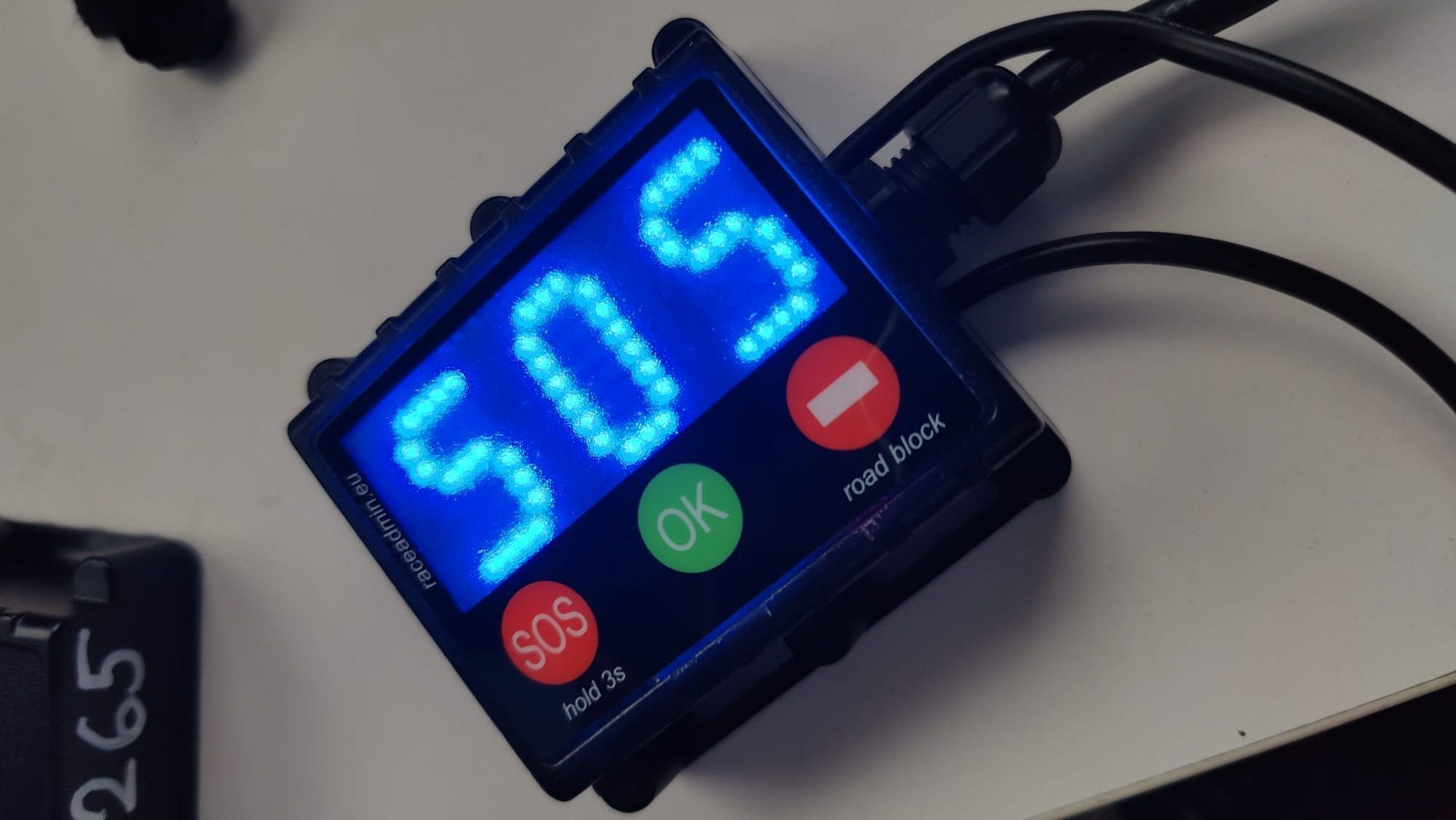
Examples of proper installation of the safety console, buzzer, and antenna.
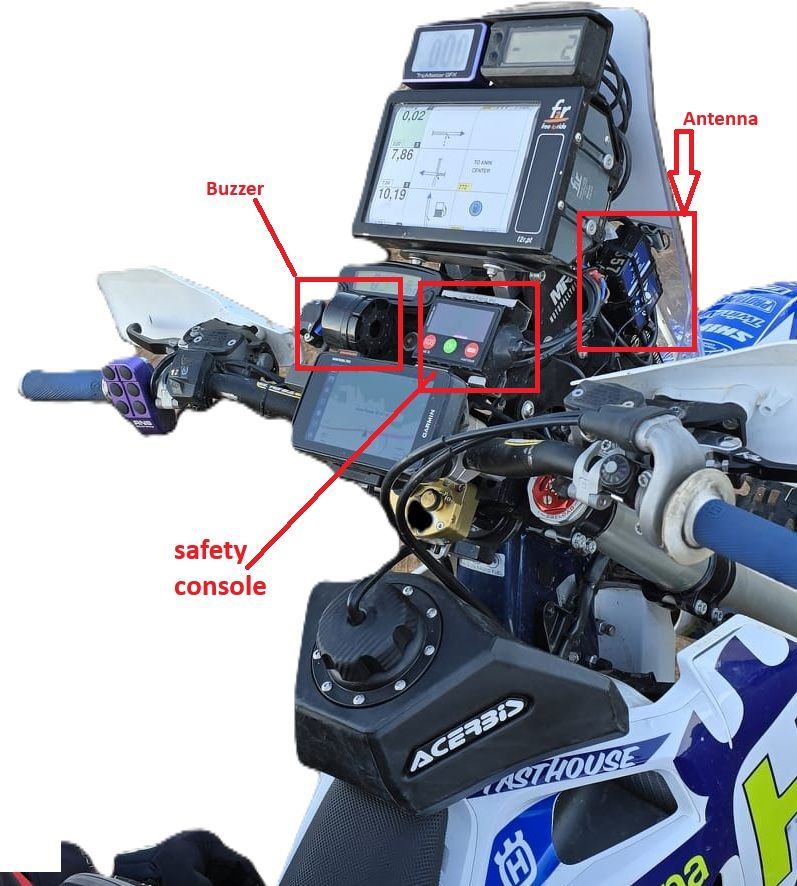
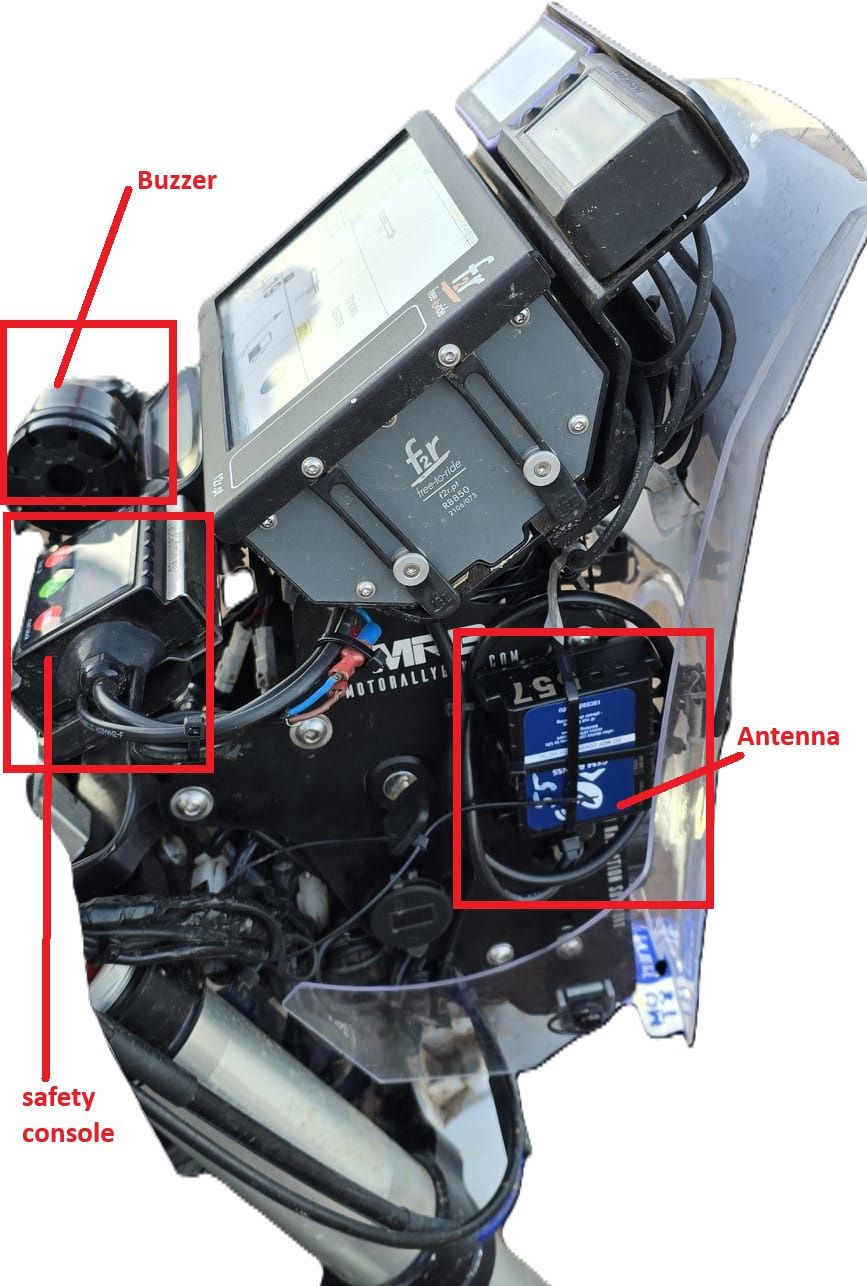
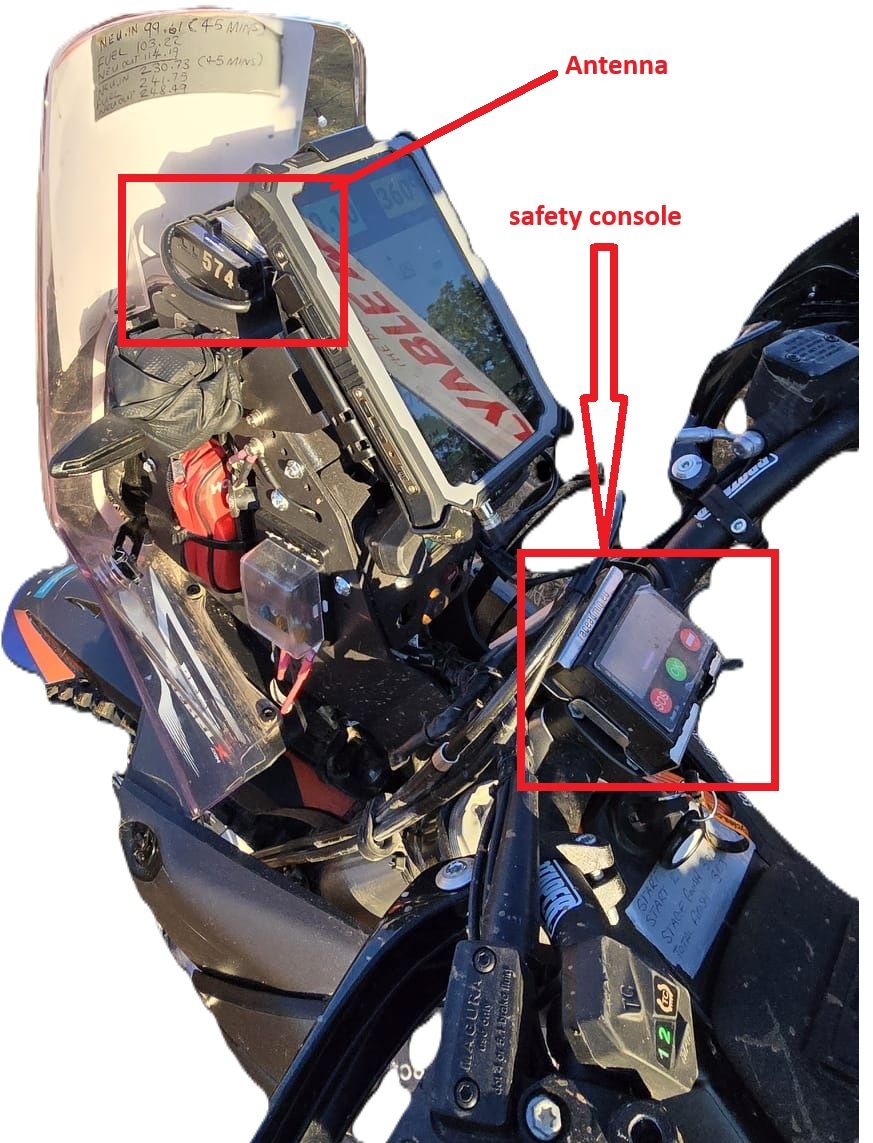
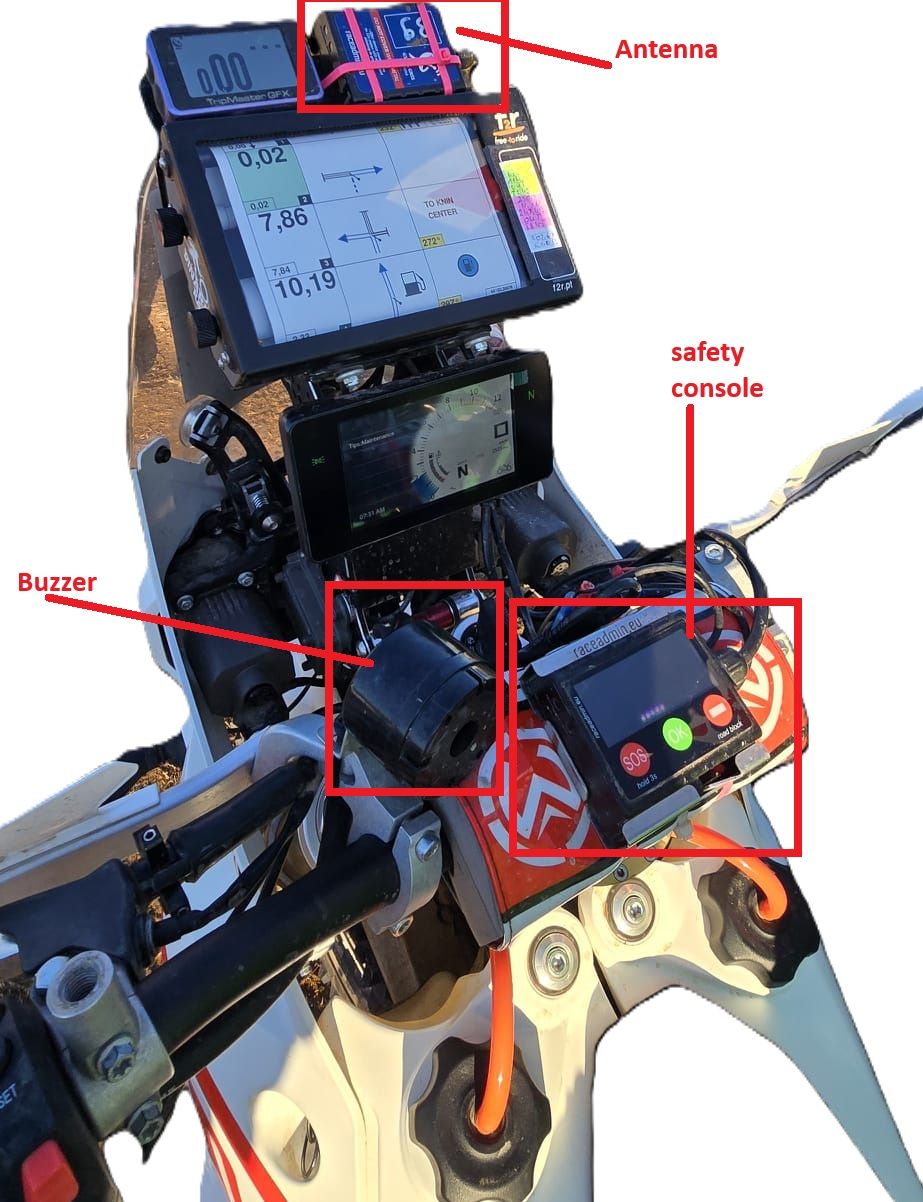
Important
Do not cover the GPS antenna with metal.
- The top side of the GPS antenna must always have a clear view of the sky.
- The GPS antenna must not be in an upside-down position.
CRITICAL NOTICE!
Every participant must ensure that the battery and charging system (alternator) are in good condition before installing the power supply cable for the GPS tracking system.
The organizers take no responsibility for any consequences arising from a faulty charging system (alternator) or a defective battery.
Before the Stage Start
The safety console must be turned on at least 60 minutes before Bivouac start of the first rider.
You can confirm that the console is on if the middle section of the console is illuminated.
Press the OK button repeatedly to ensure that the buzzer is functioning and that the sound is audible.
Go to https://raceadmin.live and select the race map.
System Check
Check ‘Last seen’ and ‘Battery’ in the picture.
If ‘Last seen’ is under 45 min – OK. If more, check if the system is ON.
If ‘Battery’ shows 0.00, it means the system is not connected to 12V.
Please check the wiring.
If ‘Battery’ shows 12.00V or more – connected correctly
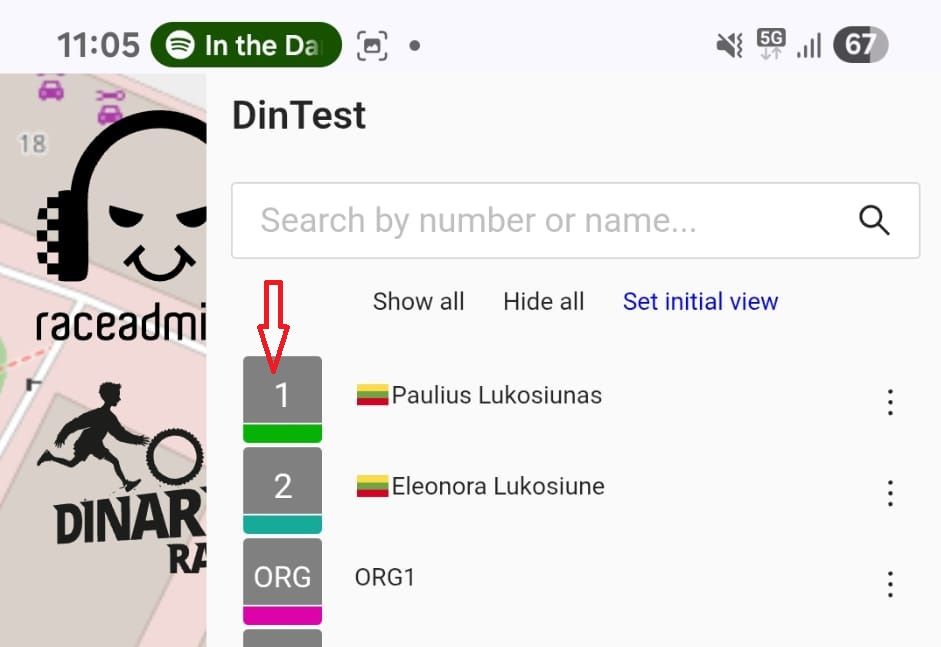
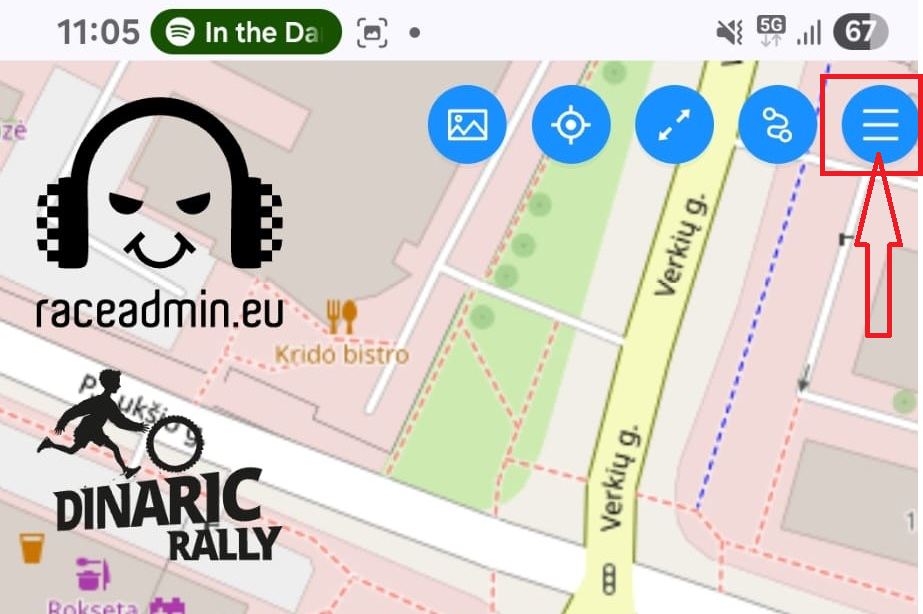
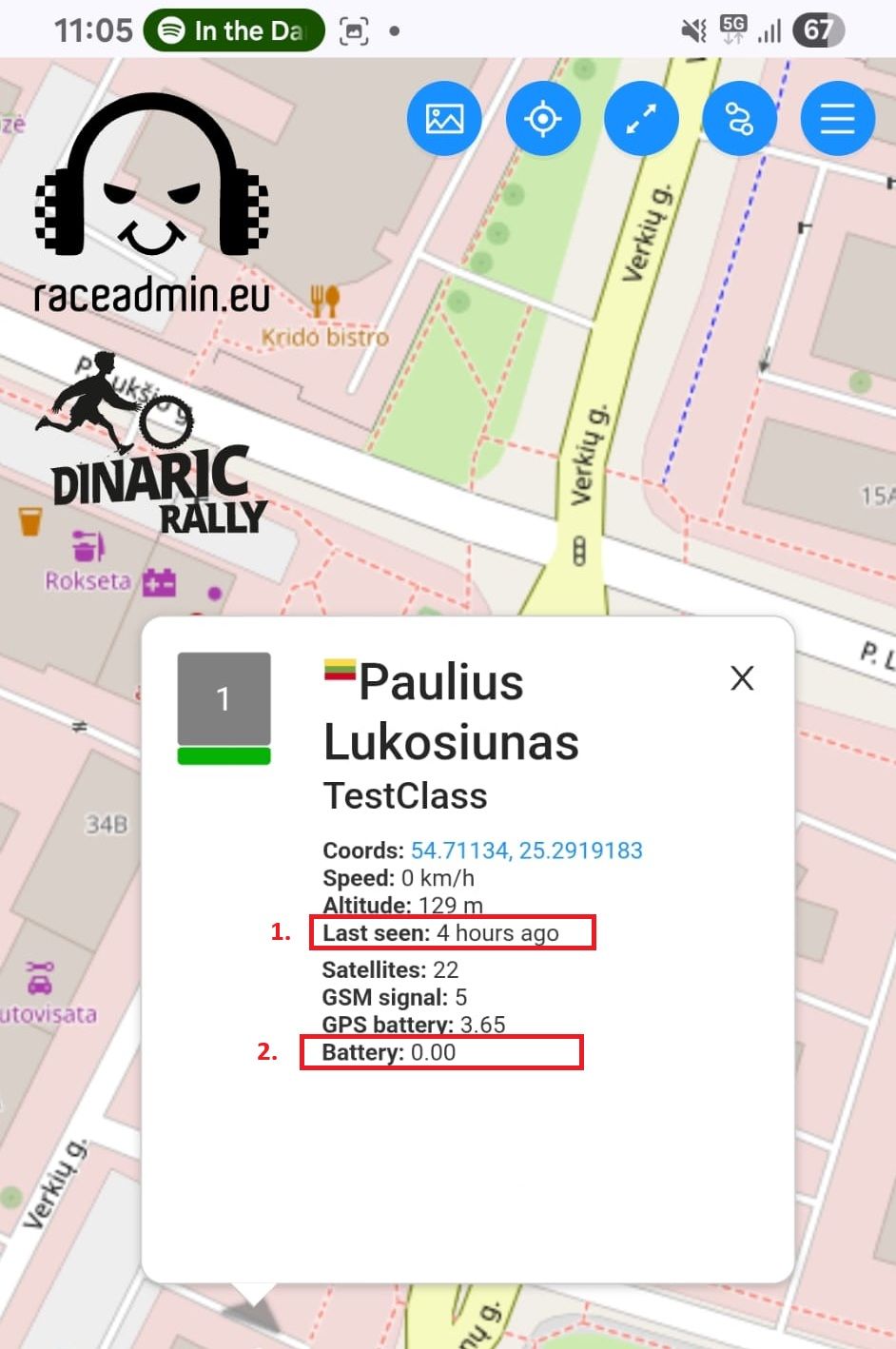
During the Rally (Device use)
Rider’s message to Race Administration Center (ORG) using one of three buttons.
The button must be held down for 3 seconds. Each second corresponds to a symbol appearing on the display.
Rider to ORG Messages
| Button | Message | Messages delivery via | Message delivering to |
|---|---|---|---|
| SOS | Call for medical assistance / help | SMS / TCP | ORG MAP / Safety Team |
| OK | Informing ORG that rider is OK, no need for medical assistance | SMS / TCP | ORG MAP / Safety Team |
| roadblock | Call for technical assistance / help | SMS / TCP | ORG MAP / Safety Team |
ORG Messages to the Rider
| Message | Screen Message | Time on screen | Buzzer beeps |
|---|---|---|---|
| Are you OK? | OK? | Constant until confirmation | Every 2 seconds until confirming |
| SOS (call received) | SOS (Call received – Blue color) | Constant until cancellation | 3s |
| Stage Canceled* | Red Flag | Constantly till confirmation | Every 2 seconds till confirming |
| Out of Time Limit | OTL (Out of Time Limit – Yellow color) | 10s | 3s |
Automatic Messages (Triggered by GPS)
| Screen message | Trigger | Time on screen | Buzzer |
|---|---|---|---|
| !!! (Danger 3) (Yellow color) | Way Point radius entered (300 meters radius) | 5s | 3 × 1s |
| !!! (Danger 3) (Red color) | Way Point radius entered (50 meters radius) | 5s | 3 × 1s |
| WP (Green color) | Way Point radius entered (100 meters radius) | 5s | 3s |
| SZ! (Red color) | Speed limit exceeded | Constant | Constant |
| NZS (Blue color) | Entering the neutralization zone. The time allocated for neutralization will start counting down. | 5s | 3s |
| NZF (Yellow color) | Exiting the neutralization zone. It will stop the time spent in the zone from counting. | 5s | 3s |
ORG Messages to the Rider Scenarios
Riders leg is injured
- Rider presses SOS button and holds it for 3 seconds -> Device starts to blink and RED SOS shows on the display.
- ORG receives the SOS (with GPS locaton and other data from the rider)
- ORG confirms that SOS is received -> Blue SOS shows on Rider’s display – > Rider knows ORG received the message.
- ORG starts procedure
- ORG try to communicate with the rider by mobile phone; closest safety teams are contacted and sent to the location of the rider; if needed, safety teams start riding towards the rider.
Rider decides to continue after he realized he feels better
- Rider presses OK button.
- ORG receives “OK” message
- ORG presumes that rider is OK but will try to contact him or to get info different way to doublecheck he/she is fine
Vehicle won’t start
- Rider presses roadblock button and holds it for 3 seconds -> Device starts to blink and RB! shows on the display.
- ORG receive the “ASSISTANCE” message (with GPS locaton and other data from the rider)
- ORG try to communicate with the rider by mobile phone; if rider is not awailable, closest safety / recovery teams are contacted and sent to the location of the rider towards the rider.
Automatic Messages Scenarios
Dangerous drop
- Rider is approaching dangerous drop that is marked as a Danger 3 (!!!) in the roadbook
- 300 m before the exact place of danger, rider will receive strong audio warning and !!! will show up on his display
- the rider must take extra caution and do the best he can to prevent potential accident and to escape the danger.
- In most cases, the rider is going to consult the roadbook to see what is the danger and then he/she will adjust the speed and pass the point of danger without any consequences
Neutralization
- Rider is approaching the neutralization
- 100 m before the exact location of the start of neutralization, WP! (important waypoint) symbol will show up on rider’s display and audio warning will follow.
- Rider will consult the roadbook so that he knows where exactly the neutralization starts and how long it lasts*
- Rider will check the watch to see what is exact time he entered the neutralization
- Rider is going to calculate what time exactly he have to exit the neutralization and he will remeber it
- Rider will go to the gas station, fill the tank (or else) and he will check the roadbook to see where is the exit of the neutralization.
- Rider will continue following the roadbook till the exit of the neutralization
- When time comes, rider will exit the neutralization.
* every rider has minutes tolerance for exitin the neutralization. This means that rider must not exit the neutralization exact second but +- 1 minute.
Speeding
- Rider is approaching a speed zone
- Rider is constantly consulting the raodbook
- Rider can see by the obvious lendmarks that he is approaching a small mountain village.
- Rider will adjust the speed to the speed limit stated in the roadbook
- If / when rider is speeding, he will get audio – visual warning. SZ! will show up on the display and loud sound from the buzzer will folow
- Rider must adjust the spped to the roadbook limit
- If rider is speeding, he/she will be penalized as per the regulations
- 6 second tolerance will be given to the riders to adjust their speed after theg get the audio visual warning for speeding
Technical characteristics
Tracker
GSM / GPRS / GNSS features:
- Quad band module (GSM 850 / 900 / 1800 / 1900 MHz);
- GPRS Multi-Slot class 12 (Up to 85,6 kbps);
- SMS (text, data);
- Integrated GNSS receiver;
- Up to -165 dBm GNSS receiver sensitivity.
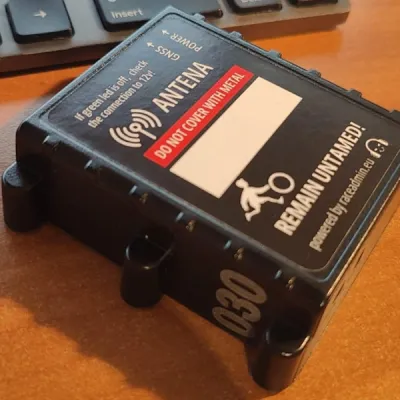
Hardware features:
- 128 MB internal Flash memory (422 400 Records);
- Integrated Li-ion battery 3.75V, 1800mAh;
- Internal High Gain GSM antenna;
- Internal High Gain GNSS antenna;
- Operating temperature -20. +50 °C
- Voltage +6 V … +30 V
- IP67 waterproof rating
- Dimensions 72,5 x 73 x 27,3 mm (L x W x H)
- Certification & approvals CE/RED, Pulse 5a, E-Mark, EAC, RoHS, REACH, SIRIM QAS
Display Device
Hardware features:
- 128 MB internal Flash memory (422 400 Records);
- Integrated Li-ion battery 3.75V, 1800mAh;
- Internal High Gain GSM antenna;
- Internal High Gain GNSS antenna;
- Operating temperature -20. +50 °C
- Voltage +6 V … +30 V
- IP67 waterproof rating
- Dimensions 72,5 x 73 x 27,3 mm (L x W x H)
- Certification & approvals CE/RED, Pulse 5a, E-Mark, EAC, RoHS, REACH, SIRIM QAS
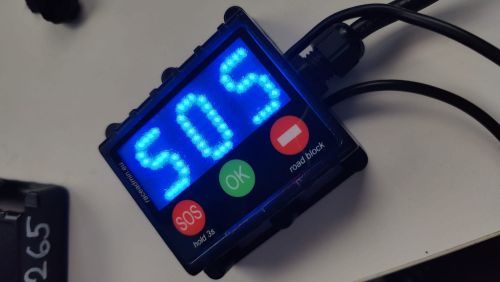
Loud Buzzer
Hardware features:
- Type of sound transducer – piezo siren
- Operating temperature -10…55°C
- Operating voltage 12V DC
- Sound level 105dB (d=1 m)
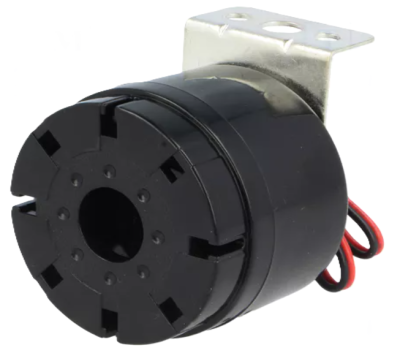
Make sure to have some Zip Ties with you and have some extra in case you need to repair those after few days of riding or after droping bike down or else.
“Vehicle-to-vehicle” communication functionality
The Race Admin tracking and safety device does not have “vehicle-to-vehicle” communication functionality.
The primary reason for this lies in the terrain of the Dinaric Alps and our experiences from Dinaric 2022, along with similar rallies where devices with these functions were used. Through analyzing various scenarios and considering riders experiences, we have determined the following:
- On rallies that take place on narrow trails, mountainous areas, serpentine roads, and highly curvy routes, riders rarely use the “overtaking” function. Even when riders send a message for overtaking, due to the track’s circumstances and other reasons, other riders rarely respond to it.
- When a rider utilizes the overtaking function while ridirng behind several other riders, it confuses all riders and diverts their focus, leading to safety risks.
- The “accident” functionality/button in highly dynamic terrains and routes that partly use public roads, where encountering public traffic (such as stray hunters or loggers) is possible, can negatively impact safety. Riders may become less cautious if they expect the tracking/safety device to warn them of every obstacle on the road, leading to new accidents if an injured riders fails to activate the accident button or if someone not involved in the rally appears on the track.
- Devices like safety and tracking units are susceptible to malfunctions, just like any other technology. It is unwise to solely rely on the proper functioning of these devices, especially when it comes to overtaking and accident capabilities. Excessive trust in technology can be even more dangerous than using no technology at all!
Through in-depth analysis, we have come to the conclusion that in today’s rallying world, many things happen out of inertia, and amateur rallies often adopt the standards of the largest global rallies, which take place under entirely different circumstances and on completely different terrains.
Considering all the mentioned factors, instead of incorporating the “overtaking” and “accident” functionalities, we have opted for a different feature that we simply call “road blocked.” The details of this functionality are crucial and will be explained in upcoming emails and during the briefings at the Dinaric rally.
